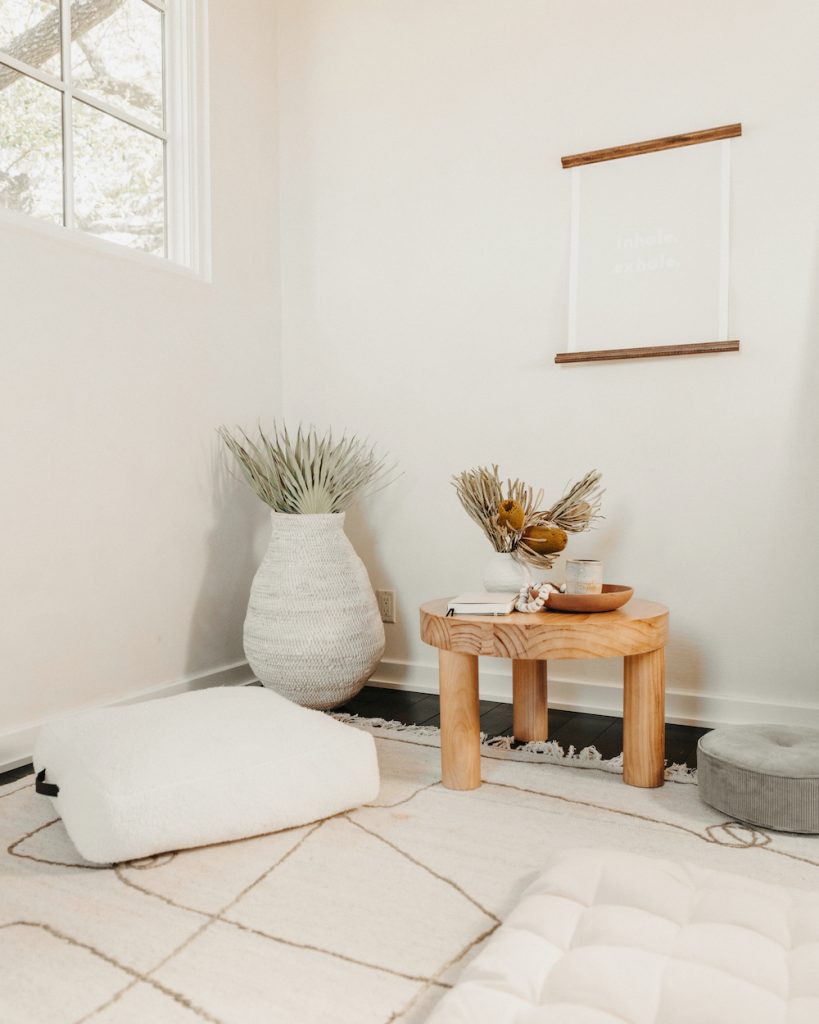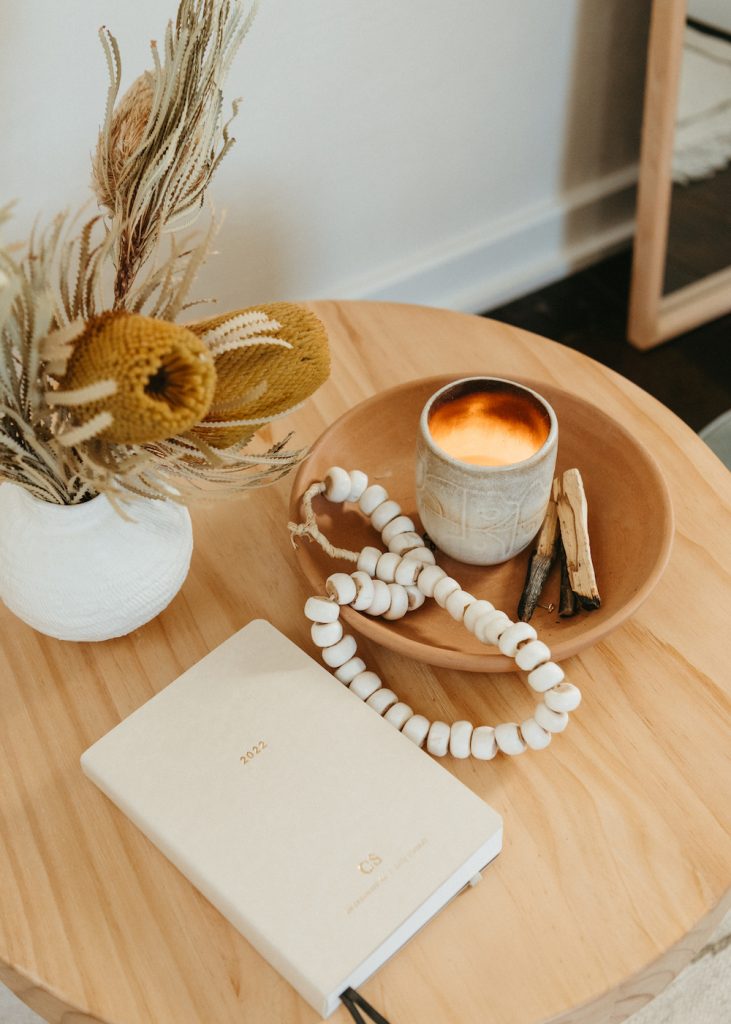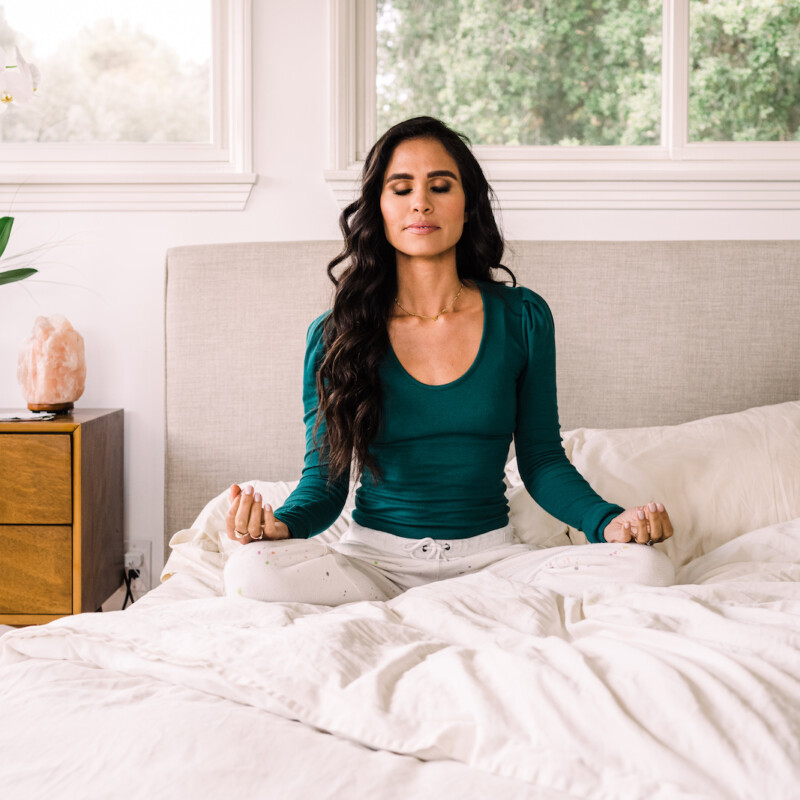I never thought the chaotic carpool lane would become my place of calm. But as it turns out, it’s one of the only times throughout my week when I have ten minutes alone to perfect my grounding breath technique. Truly, carving out the space to simply breathe has the power to transform.
There was a period when I’d use that time to blast my playlist of the moment before the kids’ pop music madness filled the car or indulge in a podcast instead. But lately, I’ve been turning the volume down (in every sense) and using the few extra moments to concentrate on breathing. For the handful of minutes I’m parked behind the wheel, I cocoon myself in the quiet comfort of the car, giving focus only to the sound of my inhales and exhales.
Making space for that intentional breath is one of the best parts of my day. It makes me feel centered, aware and present. And I do it just for me.
But that practice got me thinking. The art of the inhale/exhale has supported me during some of my biggest milestone moments. Breathwork got me through three versions of childbirth, comforted me in times of grief and loss, and kept my knees from buckling at the wedding altar.
Feature image by Michelle Nash.


Discover How Bringing Intention to Your Breath Technique Can Transform Your Life
Wanting to dive into the everyday benefits of practicing an intentional breath technique, like stress and anxiety and even potentially weight loss, I reached out to breathwork expert and author of the gorgeous bestselling book How to Breathe: 25 Simple Practices for Calm, Joy and Resilience, Ashley Neese. Below, Ashley shares everything from the best time to practice breathing, the different types of breath techniques, and beginner-friendly tips for making breathwork a part of your everyday wellness routine.
Ashley Neese holds an MFA from the California College of the Arts and is certified in breathwork, somatic trauma touch, Hatha yoga, and energy medicine. Her private sessions and workshops guide spirit seekers toward living with their hearts wide open. She works with clients all over the world, including BuzzFeed, and has been featured in Elle Japan, Vogue, Well + Good, mindbodygreen, and the Nourished Journal. She opened the goop On Health summit and is a regular contributor to the goop site. She is also the author of How to Breathe.
Breathwork was nearly unheard of a few years ago. What brought you to the practice?
I came to the breathwork space through meditation and yoga. What I loved about the breath was that it was more accessible than yoga poses and traditional meditation practices. My favorite part of my work is witnessing my clients’ wins and seeing tangible, sustainable results in their lives from the impact of this work. I love cheering them on and celebrating their successes.
One of the primary reasons people come to breathwork is to relieve stress. How does this work?
When we are in stressful situations, our sympathetic nervous system is activated which induces our ‘fight or flight’ hormones. If we are unaware of our breath in these moments, our energy can very quickly become depleted. When we’re out of the situation, our hormone levels drop back down which can cause exhaustion. Over time, depleted energy can show up as lack of motivation, extreme fatigue, constant feelings of overwhelm, or even depression. The good news is that a consistent breathwork practice can create balance, peace, and space in the body to offset the energy deficiency.


Can breathwork improve sleep? And how about digestion?
Gentle breathwork can greatly support sleep and digestion through downshifting into our nervous system’s ‘rest and digest’ mode.
Are there different types of breath techniques?
There are many different types of breathing and different methodologies for teaching breathwork. The breathwork practices that I teach are effective for everyday situations such as grounding your energy at work and reducing anxiety, as well as more long-term practices that focus on cultivating resilience or strengthening intimacy.


How do different breath techniques affect our well-being?
One of the great things about breathwork is that you can start with a very simple practice for general nervous system regulation, or you can practice a specific practice for a certain outcome. In my book, How to Breathe,I cover a range of breathwork practices that support anger, sleep, connection, grief, and focus.
When is the best time of day to practice breathwork?
I always tell my clients that the best time to practice is the time of day that’s the easiest to schedule. I have clients with small children who like to practice either before the kiddos wake up or with their children at the end of the day. I also have clients with more flexibility in their lives and they practice before work or in the late afternoon. There is no perfect time of day or evening, rather, it’s the consistency of your practice that matters most.


For beginners, what’s the best way to start practicing breathwork?
Choose a simple practice to start, like the Ocean Breath or Extended Exhales. Whatever you choose, practice for just a couple of minutes a day. My clients have the best success establishing a practice when they build their practices into something else that they’re already doing each day. This is called ‘habit stacking’ and it takes much less effort than trying to carve out time from an already-packed schedule. Try stacking your practice before or after you brush your teeth, exercise, work, or take the kids to school. I mostly use the timer setting on my iPhone to practice, but apps like Calm can be very helpful too.
The key is to make it simple for yourself in the beginning. We all have so much going on and we don’t want our practice to feel like one more thing on our to-do list. You can always lengthen the duration of your practice in the weeks ahead!





